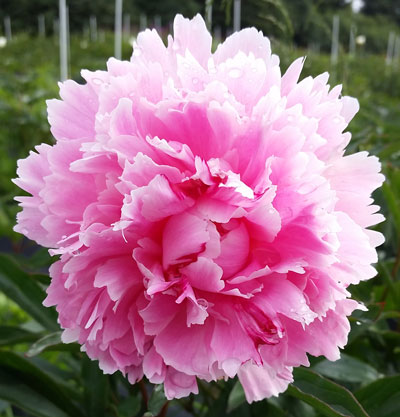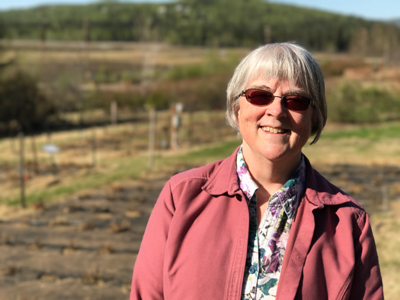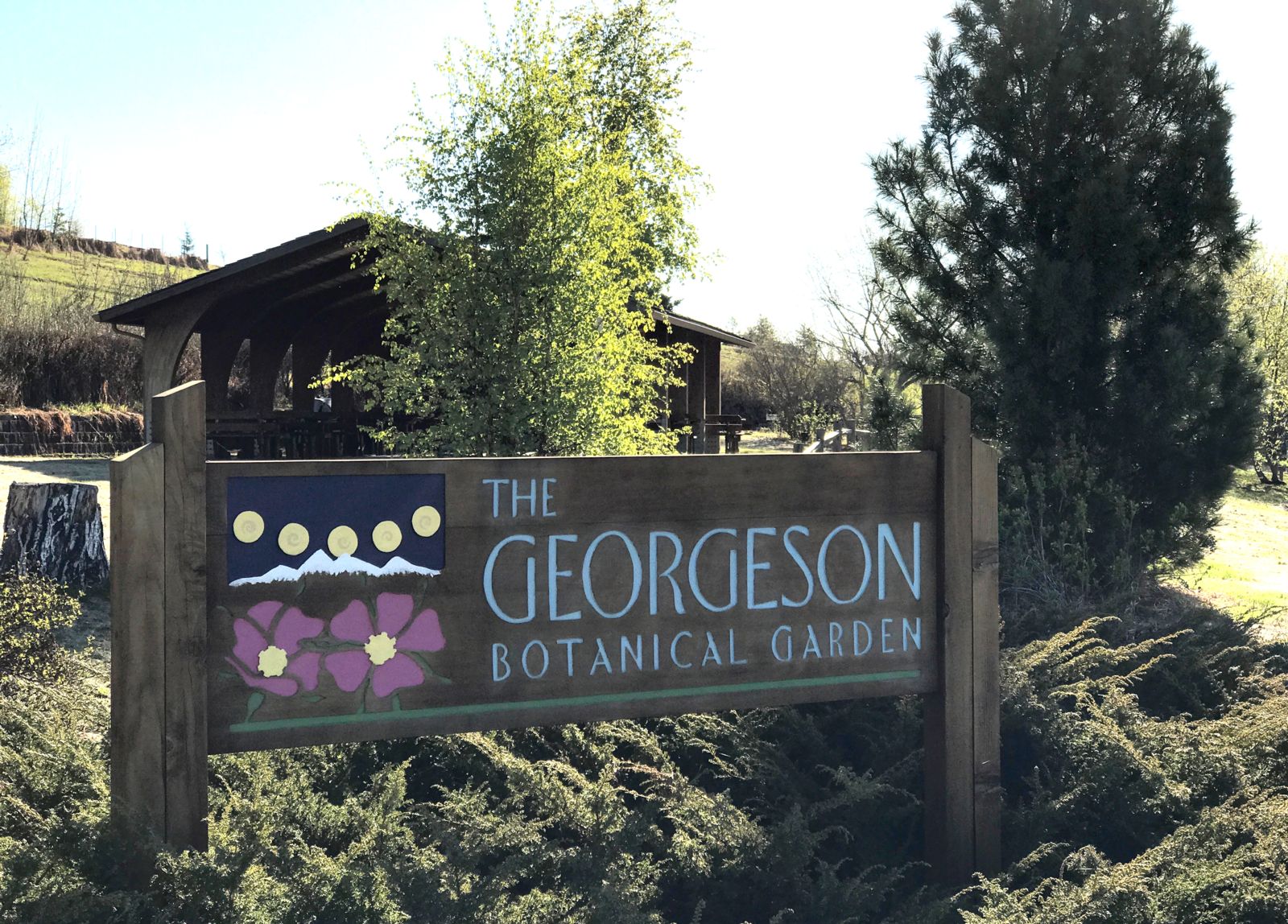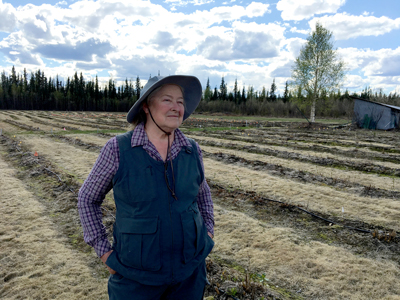A Home-Grown Industry: Alaskan Peonies Fills a Global Gap
 Not very long ago, if you were planning a summer wedding or special occasion, one flower you could not get at any price was a peony. The elegant, lacy blooms simply weren’t available.
Not very long ago, if you were planning a summer wedding or special occasion, one flower you could not get at any price was a peony. The elegant, lacy blooms simply weren’t available.
Alaska changed all that.
Beginning in 2001, University of Alaska researchers, cooperative extension specialists and hard-working growers around the state built a brand-new industry in Alaska and made peonies a year-round crop.
Here’s how it happened – and what comes next.
Looking for an Export
The godmother of the Alaska peony industry is Patricia Holloway. Holloway, who is now retired, was the horticulturalist at the University of Alaska, Fairbanks, where she’d been testing different plants and different varieties to see what can grow under Alaska’s unique conditions.
“Anything we could think of that might grow here we tried,” she said. “Mostly for gardeners, because there’s not a huge ag industry in our area. But we do have the third-largest air transportation system in the world, so I was always looking for something we could put on a plane and sell.”

Horticulturalist Pat Holloway
At the Georgeson Botanical Garden at the Fairbanks campus, Holloway and colleagues planted berry variety trails, ornamentals and dye-producing plants for weavers and spinners. They planted plants sold by the chain hardware stores they knew wouldn’t survive because “there’s educational value in showing people what dead looks like.”
And Holloway planted a peony variety trial. The flowers grew in private gardens in Fairbanks, and there are peonies planted in the early 1900s in Fort Yukon – which is above the Arctic Circle – that still bloom today.
About the same time, the University of Alaska Cooperative Extension Service held a conference.
“We’d asked farmers what they wanted to learn about and invited speakers to address those topics,” Holloway explained.
One of the topics was the cut-flower industry, and one of the invited speakers knew peonies.
“He told us, ‘You have something no one else has – peonies in July. No one else in the cut flower industry has a peony that blooms in July,’” Holloway recalled.
 In the Northern Hemisphere, peonies bloom from late April into June. Southern Hemisphere production begins about October. The July-August-September gap meant peonies were a seasonally available flower. Seasonal flowers are less desirable than a flower available year around because wholesalers have to reintroduce seasonal flowers to their clients annually, and florists can’t create always-available bouquet designs with them.
In the Northern Hemisphere, peonies bloom from late April into June. Southern Hemisphere production begins about October. The July-August-September gap meant peonies were a seasonally available flower. Seasonal flowers are less desirable than a flower available year around because wholesalers have to reintroduce seasonal flowers to their clients annually, and florists can’t create always-available bouquet designs with them.
There was a gap in the market. But could Alaska capitalize on it?
Crunching the Numbers
Holloway’s part of the research was testing varieties. She planted 30 different varieties in different locations: on the botanical garden’s south-facing slope, in the nearby community of North Pole, where temperatures are even colder than Fairbank’s 50-below winter lows, and at higher elevations.

An emerging peony
A lot of the varieties worked. As long as there was an insulating layer of snow on the ground, the peony roots could survive the harsh winter and bloom again.
At the same time, other colleagues were looking into the economics of the industry, seeing if commercial production was viable. They looked into shipping and storage. They explored potential pest issues. They looked for any information that would tell them peonies weren’t worth pursuing.
They didn’t find any.
“We needed people to start talking about this, so in 2004 we organized a conference in the middle of December in Fairbanks, Alaska,” Holloway said. “And people came. At that first meeting, they organized the Alaska Peony Growers Association.”
Ron and Marji Illingworth were founding members, and the task ahead was daunting.
“We had to figure out all the different components of an industry,” Holloway said.
Taking the Plunge

Marji Illingworth of North Pole Peonies
The Illingworths are retired educators who had been farming in North Pole on a small scale to sell at the Fairbanks farmers market. Peonies were intriguing, so they did their own trials.
“We ordered 25 roots, which look like sweet potatoes,” Marji said. “There were five of each variety, and for the most part, they lived. So we put in few more the next year. Then we’d put in a couple of hundred, maybe 250, at a time.”
For the first three years or so, the plants produce one harvestable stem, but that number goes up. After about five years, growers can cut three to five stems per plant, sometimes more. And the plants could produce for 30 to 40 years – no one really knows in Alaska.
“We started small and went slow,” Marji said. “And about year three we realized we had to learn how to market. Now we’re just starting to get a big harvest and have 12,000 roots in the ground.”
The Illingworths and other area producers formed a co-op, and expect to deliver 60,000 peonies this year.
“We can put together orders of 4,000 stems,” Ron said. “We’re going for the bigger wholesalers and larger quantities.”
Alaska peonies hit the market in 2007, and worldwide prices went up because peonies had become a year-round flower. The Alaska Peony Growers Association has also grown, from its initial 10 members to around 100.
“We’re probably more focused on education, training and developing our standards than any group of farmers you’ll find,” Marji said. “We have new growers’ schools and producers’ workshops and harvester training. We have an annual conference to share the latest research and address issues.”
Managing the Problems
Pests aren’t a huge issue generally in Alaska, but the state isn’t insect or disease-free either. Botrytis is the big disease of peonies, and early research shows 12 different species are present in the state, including one that’s unique to Alaska. Some peony roots imported into Alaska had tobacco rattle virus, which is more of an economic threat to the state’s potato crop than its peonies.
“Three years ago, we had an outbreak of lygus bug where we hadn’t had any big problems prior to that,” Marji said. “The only entomologist around here is at the university’s Museum of the North, but he was able to identify what it was and we got it controlled.”
Aphids and cutworms can also cause problems, and University of Alaska researchers have a grant from the Western Sustainable Agriculture Research and Education program to begin developing integrated pest management protocols for peony producers.
Another issue is labor. There isn’t a migrant labor supply in the state, and available workers gravitate to the fishing industry in the summer because it pays more than ag work. The Illingworths and others rely on high school students for their critical harvest period.
“Once harvest starts, we pick at 6 a.m., 10 a.m., 2 p.m. and 10 p.m.,” Marji said. “We picked our entire harvest in 10 days last year.”
Infrastructure is also an issue. The Illingworths have two cold storage chillers on their farm – peonies last longer in the vase if they spend two days after harvest at near-freezing temperatures – and four other nearby farms have built chilling facilities as well.
Together they serve as pack houses, inspecting peonies coming in from other farms, storing them at 34 degrees, then packing and shipping them onto buyers. The co-op could use a bigger cold-storage facility, but because they only need it three or four months a year it’ll be hard to recoup the expense as it sits empty most of the time.
But it may be worth it.
The Illingworths are already experimenting with different storage protocols to see how long they can store stems and still have good vase life once they’re delivered. Because even though Alaska does fill the summer gap, there can still be a few weeks in September or October where the supply is thin because the south-of-the-equator flowers haven’t quite reached market yet.
And people want peonies.
“Our price goes up the longer we hold them,” Marji said.